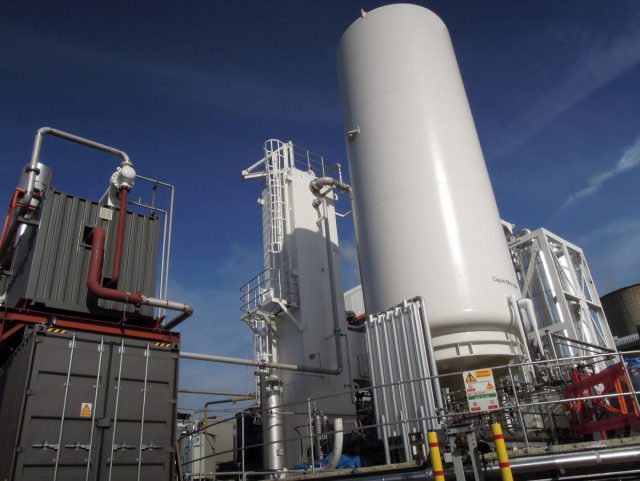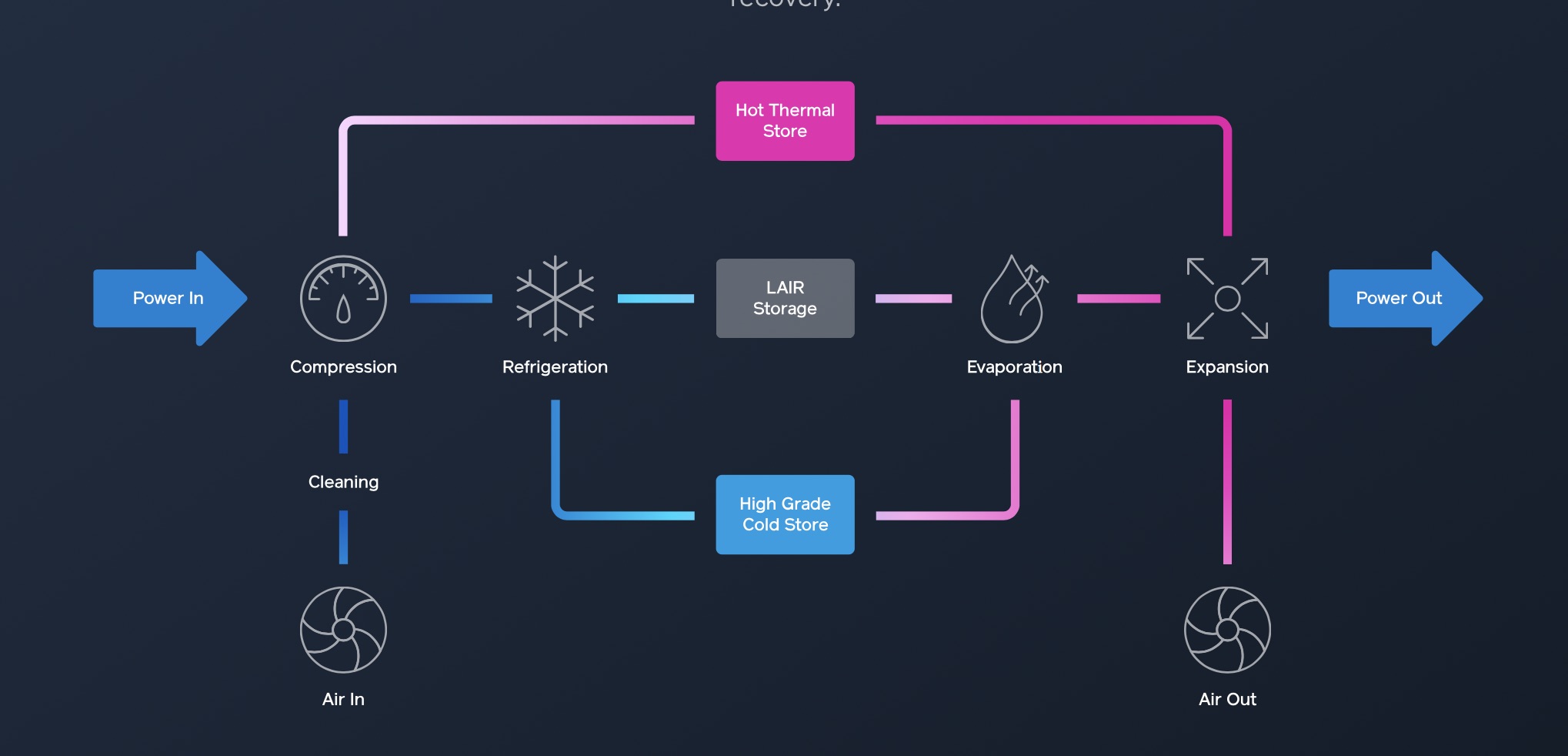The Case for Long Duration Energy Storage
Energy storage devices are rapidly being deployed as independent power producers (IPPs) and utilities look for ways to improve power generation economics, balance the grid, and increase reliability. As more wind and solar generation is added to the grid, the need for cost-effective, environmentally friendly, long duration energy storage (over four hours) is increasing.
A recent forecast by the U.S. Energy Information Administration highlights the need for more storage. From 2020 to 2050, the EIA predicts that utility-scale wind capacity will grow by 20 gigawatts (GW) and utility-scale solar photovoltaic capacity will grow by 127 GW in the United States alone. The only way for all of this new, but intermittent generation to be optimally integrated into our electrical grid, is alongside large scale and long duration energy storage.
 What Long Duration Storage Options are Available Now?
What Long Duration Storage Options are Available Now?
Many energy storage technologies are already in use, but each presents its own challenges for grid scale, long discharge storage.
Pumped hydro and cavern-based compressed air storage have been used effectively for very large-scale energy storage projects, but both have siting constraints. Pumped hydro requires close proximity to two large bodies of water with hundreds of feet of drop between them; compressed air storage calls for injecting compressed air into air-tight geologically stable structures, such as caverns or depleted oil or gas fields, which can be difficult to find.
Lithium-ion batteries have been used for stationary energy storage applications, due to their high energy density, and relatively low upfront cost. However, the longer the discharge period for a given capacity, the more batteries you need. At the hundreds of megawatts scale, the economics for two or more hours of discharge is a challenge. Lithium-ion batteries are also tough on the environment; after a relatively short life, their components are difficult to recycle, They can also pose a fire risk if not properly managed, and they rely on diminishing metal resources (like cobalt) which come with mining risks.
Flow batteries may be more economic than lithium-ion, and they don't degrade as quickly. However, there is a cost to scaling to higher power capacities. Like all batteries, they are limited in their ability to reliably provide the synchronous inertia and voltage control in the way that is possible for traditional power plants with spinning generators. This means that, as more and more solar and wind power are added to the grid, battery storage is limited in its ability to respond to large imbalances between electricity supply and demand, and keep frequency and voltage stable.
 A Versatile, Environmentally Friendly Option Emerges
A Versatile, Environmentally Friendly Option Emerges
One emerging, long-duration energy storage option, with the potential to mitigate many of the constraints posed by other systems, is Liquid Air Energy Storage (LAES).
LAES is based on the storage of atmospheric gases in liquid form. The technology uses liquid air as the storage medium by cooling ambient air (using conventional industrial refrigeration) to lower than -270 °F (-170Ëš C), which results in a 700-fold contraction in its volume from gas to liquid. The process is similar to that used to liquefy natural gas, but because LAES uses only air, the entire charge/discharge cycle is completely free of carbon emissions.
The liquid air is stored in conventional insulated tanks at low pressure (such as those used for liquid oxygen or nitrogen storage at facilities such as hospitals). When energy is needed, the liquid is warmed and pumped to pressure, then expanded back to gas with a 700-fold increase in volume. The expansion takes place through a standard expansion turbine connected to a generator to generate electricity, thus releasing the stored energy. There is no combustion - the only thing released into the atmosphere is fresh air!
Facilitating Wind Power in Texas
Long duration energy storage could prove to be particularly useful in states like Texas, where more than 20,000 megawatts (enough to power 5 million homes)1of wind generation capacity has been built in rural areas, far from demand centers. Power lines are expensive to build, and especially when dealing with the hundreds of miles between the best wind in West Texas, and large population centers in Dallas, Houston, Austin, and El Paso. Long-duration energy storage could reduce the requirement for additional (or replacement) transmission lines. It would also provide services cables can't, such as load shifting, frequency regulation, and reduce constraint on existing transmission lines
LAES is better suited to provide grid scale storage than pumped hydro-power or compressed air because it is a freely locatable system that can be sited just about anywhere. LAES plants don't take up much space and don't use any hazardous materials, have no associated fire risk, and can easily meet strict urban building codes.
An Energy Storage Empire in New York State?
Long-duration storage also has potential applications in the state of New York, which set itself some very ambitious targets for both additional renewable generation and energy storage. New York already has an established capacity market - LAES would add valuable capacity close to the electrical load, with no toxic emissions. The only prerequisite for providers to participate in the day-ahead capacity market, is that they be able to provide at least four hours of energy at rated power. Long duration storage can provide this and more. Long duration storage is also useful in other applications such as grid reinforcement; ConEdison recently released a request for proposal calling for storage with a longer than eight-hour discharge period, underscoring the trend towards long duration use cases.
Today, most new energy storage capacityis provided by lithium-ion batteries. But these degrade over time, which forces providers to significantly overbuild capacity, and be prepared to replace all the batteries as often as every five years. This adversely affects the economics of a project, and can be a major problem in dense urban areas like New York City, where fire risk is a concern.LAES plants are freely locatable, are environmentally benign, do not degrade over time, and have an economic useful life of more than 30 years.

Support for a Safer Future
A recent study by Navigant Research found that the market for utility-scale energy storage is growing rapidly, and is on track to be worth $3.6 billion by 2025. As demand grows, and utilities come to better understand the benefits of long duration energy storage, there's a high possibility that something as simple as liquid air could soon be powering your home.
 Carl Sheldon joined Highview Power at the end of 2017 as president of its U.S. subsidiary. Previously, he was CEO of the Abu Dhabi National Energy Company PJSC (TAQA) and was Managing Partner of Allen & Overy LLP's Frankfurt and New York offices during his 25 years with the firm. He received his B.A. from Cambridge University and is a Solicitor of the Supreme Court of England & Wales as well as a licensed attorney in the State of New York.
Carl Sheldon joined Highview Power at the end of 2017 as president of its U.S. subsidiary. Previously, he was CEO of the Abu Dhabi National Energy Company PJSC (TAQA) and was Managing Partner of Allen & Overy LLP's Frankfurt and New York offices during his 25 years with the firm. He received his B.A. from Cambridge University and is a Solicitor of the Supreme Court of England & Wales as well as a licensed attorney in the State of New York.
Highview Power |www.highviewpower.com
Volume: 2018 September/October











